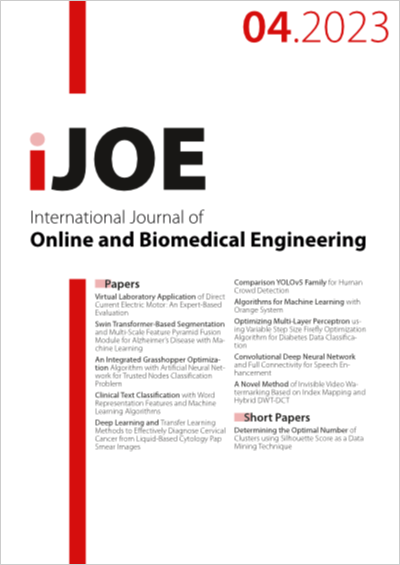Clinical Text Classification with Word Representation Features and Machine Learning Algorithms
DOI:
https://doi.org/10.3991/ijoe.v19i04.36099Keywords:
Clinical text, classification, logistic regression, support vector machines, k-nearest neighbors, naïve bayes, word of bag, TF-IDF, word2vecAbstract
Clinical text classification of electronic medical records is a challenging task. Existing electronic records suffer from irrelevant text, misspellings, semantic ambiguity, and abbreviations. The approach reported in this paper elaborates on machine learning techniques to develop an intelligent framework for classification of the medical transcription dataset. The proposed approach is based on four main phases: the text preprocessing phase, word representation phase, features reduction phase and classification phase. We have used four machine learning algorithms, support vector machines, naïve bayes, logistic regression and k-nearest neighbors in combination with different word representation models. We have applied the four algorithms to the bag of words, to TF-IDF, to word2vec. Experimental results were evaluated based on precision, recall, accuracy and F1 score. The best results were obtained with the combination of the k-NN classifier, and the word represented by Word2vec achieving an accuracy of 92% to correctly classify the medical specialties based on the transcription text.
Downloads
Published
How to Cite
Issue
Section
License
Copyright (c) 2023 Laiali Almazaydeh, Mohammad Abuhelale, Arar Altaweel, Khaled Elleithy

This work is licensed under a Creative Commons Attribution 4.0 International License.



